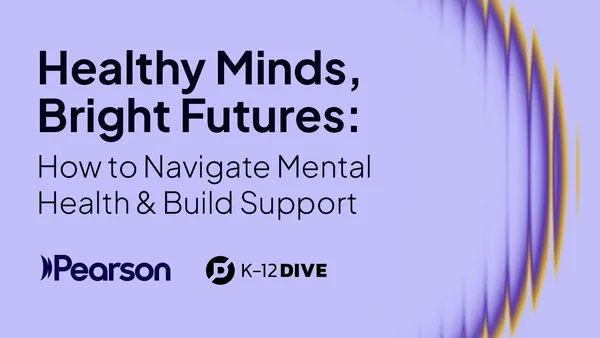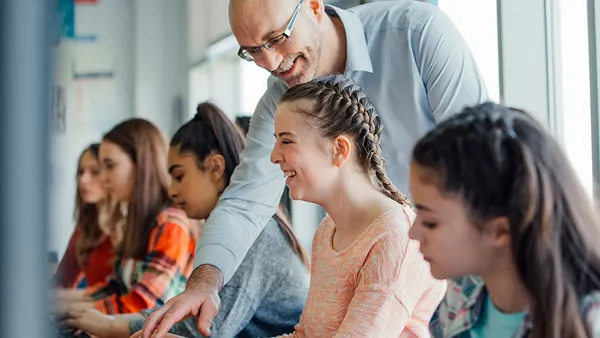Teen mental health is top of mind for educators—and top of feed for students. Headlines about anxiety, isolation, and digital overwhelm are everywhere, and high schoolers are ready to talk about it. Educators face a dual challenge: rising mental health struggles, compounded by the pervasive influence of social media. For many students, their daily feeds are filled with curated images, comparisons, and content that fuels anxiety, amplifying the struggles they already face.
At the same time, students crave purpose, belonging, and meaningful action. The challenge for educators? Turning awareness into action, channeling raw conversations into real-world impact.
A Closer Look at the Crisis
According to the CDC’s 2023 Youth Risk Behavior Surveillance report:
- 77% of high school students use social media several times a day.
- Frequent use is linked to higher rates of bullying, sadness, hopelessness, and even suicidal ideation.
Students are distracted and distressed. Many are already asking questions about their identity, influence, and well-being. Instead of mindless scrolling, they could be using these platforms to document learning and raise awareness about issues they care about.
That’s where project-based learning (PBL) and design thinking come in, offering a structure to help students make sense of their digital lives, build lifelong skills, and create meaningful change with their peers.
From Passive to Purposeful: A New Way to Engage Students
At AVID, we are always seeking ways to meet students where they are and help them tackle real-world issues like mental health. Social media is too deeply embedded in their lives for traditional methods to be enough. Students need tools that not only help them navigate digital spaces but also empower them to take ownership of their mental health.
AVID Future Lab connects real-world challenges with skills for the future. Through project-based learning (PBL) and design thinking, this program helps students move from passive social media consumption to purposeful, creative action. Students explore issues like mental health, develop skills like collaboration and problem solving, and create portfolio-ready work—such as wellness campaigns, apps, and podcasts—that prepare them for career success.
At AVID, by integrating PBL and design thinking into our curriculum, we help students turn their experiences into meaningful career-ready projects. The goal isn’t to limit screen time but to help students rethink their relationship with social media through relevant learning. When students engage with meaningful topics like mental health, their investment in learning skyrockets.
The Power of Relevance — Backed by Research
Research shows that learning is most effective when students feel emotionally and intellectually engaged. Key studies highlight that:
- Identity-safe classrooms reduce stress and enhance cognitive capacity (Hammond, 2015).
- Emotionally relevant tasks increase attention, motivation, and memory (Burklund et al., 2014).
- Problem-based learning enhances retention and deeper understanding (Bransford et al., 2000).
When students feel connected to what they’re learning, they commit. In Project-Based Learning+: Enhancing Academic Learning and Essential Life Skills by Jorge Valenzuela, teachers are encouraged to help students make connections between what they're learning in school and life skills they will need after school, including emotional intelligence and ethical use of AI.
A Structured Pathway: What It Looks Like in Practice
AVID designed a new PBL unit on the impact of social media using the 5E instructional model, a widely used framework in science and interdisciplinary teaching. Each of the ten lessons follows the Engage, Explore, Explain, Elaborate, and Evaluate sequence, supporting student agency and inquiry from start to finish. Along the way, students:
- Define a social media-related problem.
- Conduct research and map out the issue.
- Brainstorm solutions using design thinking practices.
- Prototype, test, and refine their ideas.
- Present their final project to an authentic audience.
The result isn’t a traditional essay or quiz—it’s an opportunity for students to make a difference in their community.
Designing for Future-Ready Skills
As employers and colleges call for skills like critical thinking, collaboration, and self-regulation, schools are being asked to connect academics with what comes next. This unit helps students build these durable skills through practice. Across the 10-lesson arc, students are challenged to demonstrate:
- Communication through interviews, reflection, and public presentation.
- Metacognition as they track their learning and adapt their strategies.
- Leadership through team roles and project management.
- Creative problem-solving as they develop and refine solutions.
These skills aren’t confined to rubrics—they’re embedded in every choice students make throughout the project.
Early Successes With AVID Future Lab
Though AVID Future Lab is still in its early stages, feedback from pilot educators in Missouri has been promising. Teachers have reported that students were more engaged and reflective when addressing real-world issues. One teacher shared, “PBL connects real-world skills with student interests.” Another noted, “Students apply solutions to problems they see in their own lives through a supportive structure.”
These shifts are crucial in a time when students often feel powerless. Empowerment drives engagement.
Culture, Not Just Content
This work gives students ownership. They investigate its impact, decide what matters, and choose how they want to respond. This agency is a hallmark of AVID’s approach to student-centered learning, and it is essential to building trust, motivation, and deeper understanding.
By the end of the unit, students know more about social media and have applied that knowledge. They’ve learned how to empathize, lead a process, manage feedback, and publicly share their voice. In short, they’ve rehearsed the work of citizenship in the digital age.
What School and District Leaders Can Do
To support this work, school and district leaders can:
- Center student voice. Let students investigate issues they care about and guide the inquiry.
- Prioritize real audiences. Encourage students to share their work beyond the classroom.
- Use flexible frameworks. Lean on models like 5E and design thinking to support, not limit, creativity.
- Focus on future-ready skills. Embed collaboration, self-direction, and reflection into the learning process.
Reframing the Role of Schools
As educators, our role isn’t just to teach standards or prepare students for tests—it’s to help them navigate the world they live in. In a digital landscape filled with endless content and rising anxiety, students need tools to create, not just consume. To lead, not just react.
When students engage in meaningful work, they see themselves as agents of change. That shift—from scrolling to solving—isn’t just timely. It’s transformational.
To learn more about AVID Future Lab and how to bring this work to your school, visit avid.org/future-lab.






 Dive Awards
Dive Awards




